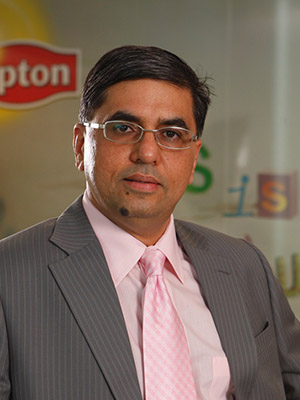
HUL volumes up 6 percent, sales edge up
Company plans to return excess cash to shareholders, raises advertising expenditure
Hindustan Unilever Limited, the country’s largest consumer goods company reported a steady set of numbers even as it unveiled plans to return excess cash to its shareholders.
The maker of Surf detergent and Knorr soups showed volume growth at six percent. Net sales rose to nearly 3 percent to Rs 7,980 crore in the three months to December, from Rs 7,774 crore for the same quarter previous year.
In the last three quarters sales growth has been below volume growth as the company has passed on the lower costs of raw materials to consumers. As a result, HUL’s profit after tax (before exceptional items) rose 7 percent to Rs 1,024 crore.
HUL’s stock slid over five percent after earnings came in, but this was a reflection of both the nervousness of the markets as it was the fact that profit after tax slid 22 percent to Rs 971 crore. The company clarified that the profit numbers were not comparable as the same quarter last year consisted of the sale of its property investments in Mumbai. HUL stock ended down 2.7 percent at Rs 804.25 at the National Stock Exchange.
HUL’s results come amidst the backdrop of slowing volume and sales growth for consumer goods companies across India, as rural demand weakened. India’s rural markets, which until late 2014 had grown at 1.5 times their urban counterpart, are now growing at the same pace, HUL’s CEO Sanjiv Mehta said.
The overall Indian consumer goods market grew by 2.5 to 4 percent in volume terms (in the past three quarters), Mehta told media. The aim is to grow faster than the market and “make sure I don’t lose my consumer franchise,” he added.
While growth was slow urban consumers were still uptrading – a term used to explain people buying more expensive versions of the same product, Mehta said.
One way the company did this was by constantly pushing sales and making sure that consumers don’t rush to other cheaper priced options in the market.
HUL raised its overall advertising and promotions expenditure by Rs 160 crore to Rs 1,137 crore, in the December-ended quarter. This was done to develop new categories, Mehta said.
The company also made sure that they took price reductions quickly – particularly in soaps and detergents where falling raw material prices have reduced costs.
“We’d learned from our mistake in 2008-09 when we didn’t reduce prices fast enough and lost consumers,” said HUL’s chief financial officer P Balaji. He estimated that the company had cut prices by 2 percent last quarter and by 10 percent through the course of calendar year 2015.
HUL also announced its intention to return Rs 2,187.33 crores of cash to its shareholders. This cash lying in its reserves will first be moved into its profit and loss account. Known as a ‘scheme of arrangement’, the company first has to take permission from the courts for this scheme as such a thing has never been attempted in the past.
Once approved, the HUL board will take a decision on how and when to return the money to shareholders. Balaji expects the court's permission to come in the next six months. He reiterated that HUL was doing this to make its balance sheet leaner and also because it had enough free cash flow (Rs 5,000 crore) to fund any acquisitions that may come its way.
















